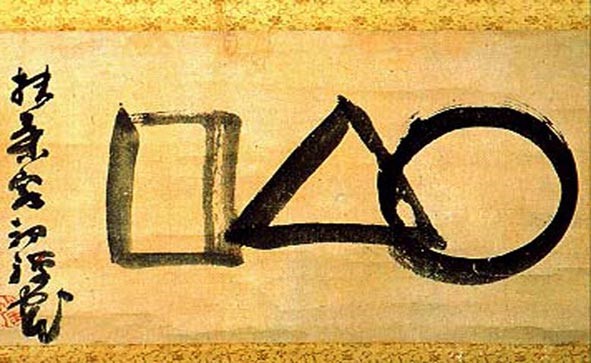
cosmic circle-triangle-square.
While few designers today would argue for the universal validity of such combinations, the attempt to identify the grammar and elements of a perceptually based “language of vision” has informed modernist design education since the 1940s.

The circle-triangle-square is Sengai’s picture of the universe. The circle represents the infinite, and the infinite is at the basis of all beings. But the infinite in itself is formless. We humans endowed with senses and intellect demand tangible forms. Hence a triangle. The triangle is the beginning of all forms. Out of it first comes the square. A square is the triangle doubled. This doubling process goes on infinitely and we have the multitudinosity of things, which the Chinese philosopher calls ‘the ten thousand things’, that is, the universe.
The trouble with us linguistically-minded beings is that we take language realistically and forget that language is of no significance whatsoever without time. In truth, language is time and time is language. We thus come to think that there is in the beginning of the world a something which is real and concrete, such as a world of galaxies which though formless and nebulous is yet real and tangible. This is the foundation of the universe on which we now have all kinds of things, infinitely formed and varied. It is thus that time itself begins to be thought of as something concrete and real. A circle turns into a triangle, and then into a square, and finally into infinitely varied and varying figures. In the same way the Biblical account of creation has turned into historical truth in the minds of many. But Zen is very much against such fabrications.